Contents
How do Tax Deductible Expenses Work?
- Marketing Costs
- Gifts & Entertaining
- Vehicle Costs
- Other Travel & Subsistence
- Director’s & Employee Costs
- Cost of Sales
- General Overheads
- Equipment & Assets
- Pre-trading Expenses
- Taxes & Penalties
- FAQs
Being able to claim tax relief on expenditure in a business is often the first point of focus for anyone trying to achieve tax efficiency and save money. Saving tax on the profits your company makes means that you will then have more cash to invest in business growth.
As a starting point I’d like to put things into perspective for you:
In general there are only three legitimate ways to save tax and I’ll start with the most important:
- Efficiently structuring your share ownership, salary and dividends, as well as ensure any family members involved have done the same.
- Utilising tax deductions on allowable expenses and any enhanced deductions available.
- Timing transactions to delay tax bills.
The first way is by far the most important and if you haven’t read my article on how to get money out of a limited company without paying tax then you should start there.
For example structuring your salary and dividends the right way or getting the right family members as legitimate share holders could save you thousands of pounds every year. In contrast putting some vouchers through as trivial benefits might mean you’re better of by a hundred pounds or so.
Why you should work with us
- Three working hour response target for queries
- Fixed monthly payments and any ad hoc fees pre-agreed
- Full UK based team in the office 9-5 Monday-Friday
- All-inclusive tax planning and software support
- Inclusive support for tax investigations and issues
*T&C’s apply
How do Tax Deductible Expenses Work?
We once had a client who was furious because HMRC wouldn’t send him a cheque to reimburse him for the 45p a mile he’d spent on travel. He had a fair point though, because we’d just assumed he understood how the system of tax relief worked, but never again so let’s start with the basics…..
Corporation Tax Relief
Corporation tax is worked out as a percentage of your profits so the higher they are the more tax you pay, but also the higher your profits, the higher the rate of tax as well. This could be in the region of 19% to 25% for your company.
Tax deductible expenses allow you to lower your profits when calculating your tax bill, which is valuable because not every transaction through your business is relevant when it comes to tax and profitability.
A good example is the dividends you pay yourself, clients or supplier entertaining costs, or even any loan repayments you make on company debt being excluded as tax deductible. Corporation tax and your own self-assessment payments are also not tax deductible.
PAYE is tax deductible as an expense and VAT is generally not relevant because it is worked out separately before you even start working out your profits, but could generate a gain or loss if you’re on a flat rate scheme. Profits relating to Corporation Tax are always worked out after VAT, don’t use gross figures!!!
Your profits and the tax due on them are worked out on your CT600 (Company Tax Return) for the accounting period in question, it’s worth understanding that your company’s financial year might be different to the tax year.
VAT Relief
Typically with VAT you would charge it on your sales and this money you collect, known as output VAT is then payable to HMRC via your VAT return. The counterpoint of that is that input VAT you spend when you purchase something is then owed back to you from HMRC.
Sometimes this is netted off to reduce the bill you need to pay HMRC and in other instances you could receive a cheque or a reimbursement directly into your bank account.
In an ideal world the CT and VAT treatment of an expense would be the same, but in reality the quirks and differences between the two are significant.
As I work my way through this article I will highlight the areas the VAT treatment for a particular type of expense differs from it’s corporation tax equivalent, if you don’t see any notes regarding VAT then assume it’s the same and can be reclaimed.
If you’re exempt or partially exempt from VAT then you will be limited to the amount you can reclaim, it is also worth understanding the Diminimis limits for partial exemption as you can benefit from an enhanced claim up to £625 per month.
Do not assume under any circumstances that your supplier is VAT registered, you must check their VAT number as you are financially responsible if you are defrauded by them, and charged VAT when they didn’t have the right to charge you.
Self-employment
In general there is a close alignment between the treatment of companies and that of self-employed individuals, I will also highlight any areas that sole traders differ to limited companies when it comes to tax deductible expenses.
Key Takeaways
- The two main areas a business can save tax is through paying less corporation tax and also by paying less VAT. Quite often with taxes you may have to pay more in one area and less in others to save money overall.
- To claim business expenses, they must be incurred wholly and exclusively for business purposes, properly documented, and ideally paid through the company’s bank account. Dual-purpose expenses that mix personal and business use are generally not allowed, but with some minor exceptions where incidental use is tolerated.
- Decisions shouldn’t be made solely for the purposes of saving tax and the overall commercial benefits or drawbacks should be considered. Don’t let the tax tail wag the dog!!!
Business expenses incurred personally
Often in the course of business you might end up paying for certain business expenses via your personal funds or credit card, it is reasonable to expect your business to reimburse you for these.
Ideally you’d also have the invoice made out to the business, but this isn’t completely essential as there is reasonable le-way if a supplier has addressed it to you personally, but you can prove it was for a legitimate business expense.
The trap to watch out for relates to certain expenses where the contract has to be in the businesses name, like a phone or broadband contract and also certain types of insurance and vehicle costs, all of which I’ll cover later on.
Non-deductible Expenses
While reading this article you may realise that not all expenses are tax deductible for corporation tax or VAT, which then raises the question “Do you need to declare them as an employee benefit or take them as a dividend?”.
The answer depends on the nature of the expense, for example entertaining could be considered non-deductible for Corporation Tax and VAT, but not an employees personal expense.
In contrast a parking fine from the Council could be considered non deductible for CT, VAT and also a personal expense of the employee, which would then mean a benefit in kind has to be declared or that dividends need to be issued to pay for it.
This small difference in treatment can make a big difference especially if you’re a higher rate tax payer and want to reduce your income or dividend tax bills.
Reasonable conduct
Tax payers often get carried away with expenses, which works until they have to deal with an enquiry and it ends up in a tax tribunal. Just because something sounds reasonable to yourself, doesn’t mean it will to a HMRC compliance officer or a judge.
Whilst custodial and criminal sentences are rare for abusing the tax rules, the enquiry process is time consuming and expensive. Even if you’re right and you win, it is rare to be able to recover your defence costs and quite often they outweigh the tax and penalties HMRC wanted from you in the first place.
Prevention and reasonable conduct are the best cure, this means you must:
- Keep clean and accurate records (don’t over complicate transactions or overuse personal expenses)
- Use the white space in tax returns or attachments to explain any unusual activity in your business
- File tax work on time
- Ensure all activities and purchases are done primarily for commercial reasons
HMRC have the right to challenge any business expense or arrangement on the grounds that it wasn’t for genuine commercial reasons.
1. Marketing Costs
Many businesses conduct some form of marketing activity and in general these come with Corporation Tax relief and VAT reclaims with some exceptions:

Software & Digital Advertising
Whilst nearly all software and paid advertising you put through the business will attract corporation tax relief, you will need to be really careful about how you record the VAT as many suppliers aren’t based in the UK and are likely using a zero rated reverse charge mechanism, which means there might not be any to reclaim.
PR Expenses
Public relations are an important part of growing a brand and there will often be times where you need to engage external agencies and marketing specialists. These are fine to pay through your business and claim tax and VAT relief on.
Marketing Events & Gifts
Events or gifts provided to potential or existing customers and suppliers are often considered disallowable entertaining, however where there is a reciprocal requirement for the attendee to provide something in return for example an introduction, service or perhaps sitting through a sales presentation then the event is then fully allowable.
Timeshare presentations seem to come to mind….
Charitable Donations
Donations via cash, stock or other equipment to a charity are tax deductible and VAT reclaimable (excluding Cash), you only need to record the cash donation in the accounts as the rest will already show where you purchased the item originally. For example if you give some stock, then it will show in your profit and loss as a stock movement and you’ll get the tax relief on that.
Be aware that if you are receiving something in return for the donation, then there are limits to the value of the item you receive back before it is no longer tax deductible:
| Donation amount | The maximum value of the benefit |
|---|---|
| Up to £100 | 25% of the donation |
| £101 – £1,000 | £25 |
| £1,001 and over | 5% of the donation (this is capped at £2,500) |
Sponsorship
Whilst you can sponsor a registered charity or a club, the rules are slightly different and it’s essential to understand that sponsorship must be wholly and exclusively for the purposes of business.
This can throw a spanner in the works if you’re trying to donate money to your child’s sports team, as it would be difficult to prove that you had a purely commercial reason for doing so.
2. Gifts & Entertaining
There are quite a few areas to trip you up when it comes to having fun in the business and quite rightly the rules have evolved over the years in order to prevent people from taking advantage.

The Paradox of Entertaining
One of my most successful posts on LinkedIn discussed how it was better to buy yourself a coffee twice, rather than buy a round for you and an associate when it came to meeting up. This is an interesting paradox because if you get the round in then it counts as non tax deductible entertaining.
Where as buying your own coffee then makes it a deductible meeting expense, provided that the meeting wasn’t specifically related to a piece of work or a collaboration.
Gifts & Trivial Benefits
The general rules around giving gifts to suppliers and customers prevent tax deductions when working out your profits, but there are certain exclusions for the following:
- Samples – Where the sample is related to the main trading activity of the business and is needed to advertise it’s services.
- Branded gifts – Except if the gift is food, alcohol, tobacco or a token or voucher exchangeable for goods. Also where the cost of the gift, together with the cost of any other gifts to the same recipient in the relevant tax period, exceeds £50.
- All Charitable Gifts
- Gifts to staff – Providing the gift is not part of a general provision of gifts to people who aren’t part of your team, then they will fall within the Trivial benefits rules which are outlined in this article. As a general rule you can give your staff a gift or voucher worth up to £50 (inc VAT) without them having to declare it as an employee benefit in kind.
- Gifts to directors – For employees the number per year is unlimited, however as a director you are limited to a total of £300 from each company you direct and vouchers from the same store are combined. For example two Amazon vouchers of £50 each totalling £100 do not qualify, but one Amazon voucher of £50 and one Argos voucher of £50 will. A cash voucher which can be exchanged for cash or have change paid in cash is excluded.
Events
The rules around gifts also apply to business entertainment and holding events but with the following exceptions:
Annual Event Allowance
Traditionally know as the Christmas party allowance, this allows you to spend up to to £150 inclusive of VAT per employee, per tax year, and also for their guests. There are some basic rules:
- Can be split over multiple events e.g. Christmas party & summer BBQ
- If you exceed £150 in the year then the whole thing becomes either non deductible or a benefit in kind
- You must invite all employees to an event, it doesn’t have to be the same one though
- Can include reimbursing them or paying for events, hotels, taxis and food and drinks.
Quid pro Quo Principal
Every now and then you might end up taking someone out to dinner or drinks if they have done you a favour, perhaps by giving you a free bit of advice which would have otherwise cost your business significant fees.
It’s okay to put these entertainment expenses through your business and also reclaim the VAT, but you must be reasonable about it and keep some form of records like an email chain which explicitly shows your intentions behind the meeting.
3. Vehicle Costs
There are many forms of travel that a business may undertake and this area is complex, especially when it comes to deciding how to put a vehicle through the the business.
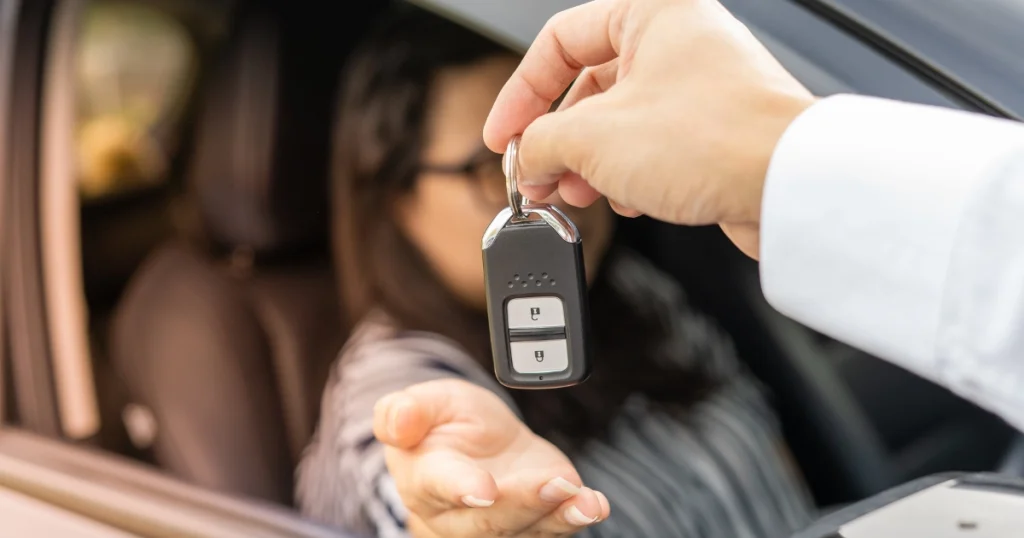
Commuting to Work
Many people just struggle to understand why the costs of their commute to work aren’t tax deductible.
It can be tempting to classify your home as the main location of work if you have an employment contract with your business and then get tax relief on any travel you do from there to an office or client. The 24 month rule is designed to stop people from taking advantage of this as a tax loophole.
24 Month Rule
The rule states that if you have or are likely to spend more than 40% of your time at a work location and have, or are likely to be there for longer than 24 months, then you are blocked from claiming travel expenses to that location.
As with many things in tax, relying on the technicalities here won’t help you. For example it would be hard to claim that your businesses office was only a temporary workplace if you were running it as a going concern, with permanent staff and long term clients.
Additionally moving to an office down the road doesn’t reset this period either, the new location would need to be significantly geographically separated from the first one.
Company Cars
Bear in mind that the car rules are different for sole traders as they are required to apportion costs for tax and VAT based on business and personal use, in a way they are much simpler but you should speak to an accountant to learn more.
When you put a vehicle through a limited company, you must ensure that the registered owner is the business and not yourself personally. You cannot simply claim the costs as an expense if you are listed as the owner, although you could claim mileage at 45p instead.
Inversely if you do want to own a vehicle personally and then just claim the mileage, you must ensure that you are the registered owner as having to “make it good” at the P11d value is a very expensive activity from a tax point of view, if you have the vehicle in the business name.
When does a company car make sense vs private ownership?
Putting a car through the company has some benefits:
- Claim VAT and Corporation tax savings on most of running costs
- Not having to withdraw money and pay dividend tax to purchase your own vehicle
- Potential VAT reclaim on actual vehicle costs, depending on if purchased or hired
And then there is the potentially significant drawback if the vehicle is available for personal use:
- For Petrol, Diesel & Non PHEV cars the company car “P11d” tax can be very high as even a cheap car can trigger a huge personal tax bill due it’s CO2 emissions. As a result it is rarely viable from a tax point of view to have these as a company car due to the benefit in kind taxes outweighing the corporation, dividend and VAT savings.
- For an electric or PHEV the company car tax is much lower and it often makes sense for them to be put through as a company car and declared as a benefit in kind.
Before I go into the specific rules for various provisions and types of vehicle, it is worth considering the difference in tax treatment based on if you lease or buy a vehicle.
The terminology around the hire and lease options gets complicated so I’ve tried to provide the main identification criteria below of each type:
Types of Hire
Hiring a vehicle means that you never own it and whilst you may be using it for a very long time it is still a hire. You may have a fixed mileage with a surcharge for exceeding it, and the option to purchase it at market value at the end. Here are some examples:
- BCH – Business contract hire, usually with an initial rental, fixed mileage and no guarantee to be able to purchase at the end
- Rental – Enterprise/Hertz, essentially any short term hire
A hire is usually treated the same as any other expense you have in your business and put through your books as you pay it. In the event of hiring a vehicle that is being provided as a company car where there is some personal use, half of the VAT is blocked from reclaim so you can only save VAT at 10% and not the full 20% your company paid.
Purchase
A purchase is different because the tax deductible expense usually has two components:
- The depreciation on the vehicle, otherwise known as capital allowances.
- The interest on the loan/finance if there is one, the capital repayment is definitely not tax deductible as you would then be double counting due to the capital allowances also being claimed.
Types of Purchase
Cash – Pay for the vehicle upfront or via a loan
BCP – Business contract purchase (hire purchase), this is usually a purchase with a loan attached, so the vehicle ends up on your balance sheet as an asset and the loan ends up as a liability. In the event there is any personal use for this type of car (vans are different) then all of the VAT is blocked from being reclaimed.
Mixed – There are times where there might be a large balloon payment at the end of the contract and it could almost seem like a hire arrangement, however the questions to ask are: Is there a fixed mileage with a surcharge per mile for exceeding it? and Is the large payment at the end guaranteed at the start of the contract regardless of the market value of the vehicle? If the answer to both is “yes”, then it is definitely a hire purchase.
When you purchase a car then you have to obtain corporation tax relief by using the capital allowances in the table below, vans are treated differently as I’ll clarify later. Please note that unlike the P11d value for working out benefit in kind tax, the capital allowances are actually based on the true cost of acquiring the vehicle.
Capital Allowances for cars bought from April 2021
| Description of car | What you can claim |
|---|---|
| New and unused, CO2 emissions are 0g/km (or car is electric) | 100% first-year allowances |
| Second hand electric car | Main rate @ 18% per year |
| New or second hand, CO2 emissions are 50g/km or less | Main rate @ 18% per year |
| New or second hand, CO2 emissions are over 50g/km | Special rate @ 6% per year |
If you also have a loan attached or it’s a hire purchase then you can only put the interest costs through the business and not the capital repayment part. Unlike hiring a vehicle you should definitely not try and put the entire payment through as a tax deductible expense, but split out the components as I’ve mentioned above.
If you subsequently sell the vehicle then a balancing charge or benefit is used to tie the amount of capital allowances utilised, back to the selling price you obtained. For example if the capital allowances showed £5,000 of depreciation over the 2 years you owned a vehicle, but you actually sold it for £8,000 less than you bought it, then a further £3,000 would be available to reduce your profits. Inversely you could also have had a reduced amount of depreciation vs your capital allowances and this would then increase your Corporation Tax bill.
Car Fuel Benefit

People with company cars often end up paying for the fuel themselves and then getting their company to reimburse them at the advisory fuel rate, or another rate they agree is more appropriate for any business mileage.
The alternative to this is to get the company to pay for the fuel and then pay tax on the car fuel benefit, which isn’t usually appealing as this can drastically increase the tax bill due to it being based on CO2 emissions just like company car tax.
Car fuel benefit is in addition to to the company car benefit in kind tax charge. A common mistake people with company cars make here is that they try and claim the full 45p a mile rate on their business mileage, when in reality the advisory fuel rate might be closer to 15p a mile.
The 30p difference between this and the full 45p is there to cover the running costs of the vehicle which means you would be double claiming as your business is already paying those costs like servicing, maintenance, repairs and insurance.
Company Electric Cars
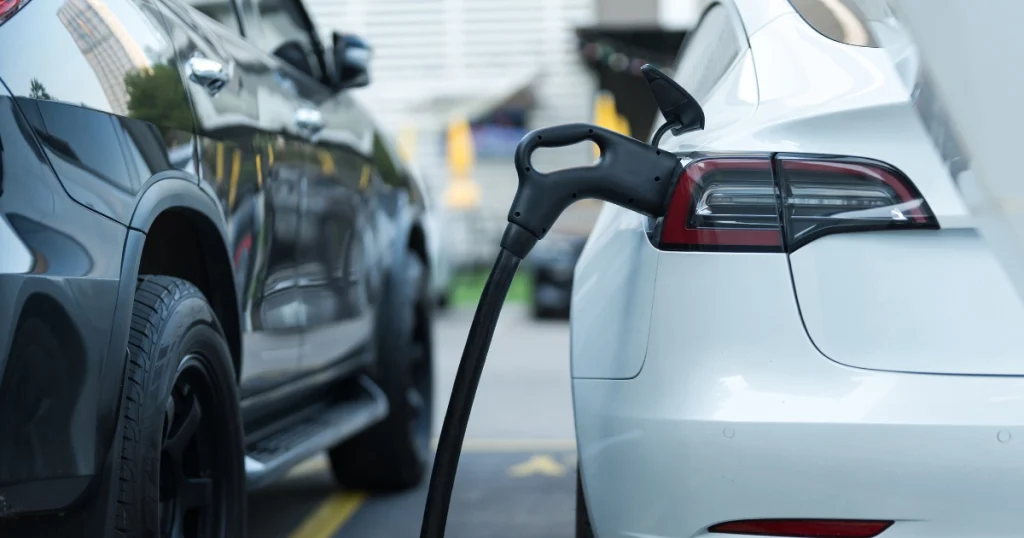
Not only are electric cars tax efficient due to the low company car taxes they attract and generous capital allowances, they also allow you to claim tax relief on all your charging costs (business & pleasure) whether at home, work or at public chargers.
This is in contrast to other types of car where you can only reimburse yourself for business mileage. Whilst you can save on your corporation tax bill by doing this, you can’t reclaim VAT on home charging costs.
It’s also possible to have a charging point installed by your company at home or work and that is fully tax deductible and reclaimable for VAT.
Pool Cars
Whilst it can be tempting to classify a company vehicle as a pool car and avoid the benefit in kind taxes. To do this successfully you would have to demonstrate the following:
- The car is normally parked at work overnight (this is tricky if you run your business from home)
- There is no personal use or commuting to work, except in an incidental context
- It is available and insured for multiple team members
- You have effective access to another vehicle
Vans
A vehicle that has a payload of over a tonne is typically considered to be a van, or other commercial vehicle. In general most businesses would treat them in the same way as a pool car above, and if they fail the test laid out then there is a benefit in kind tax for the Van and also the related fuel benefit.
Vans are also not completely blocked from having VAT reclaimed if there is personal use on them and if they don’t qualify as a pool vehicle then an appropriate amount of VAT needs to be restricted in the reclaim. eg 20% personal use, then reduce VAT reclaimed by 20%.
They also usually qualify for Annual Investment Allowance so you can put the entire expense through in the first year you purchase it for Corporation Tax as an alternative to capital allowances at a lower rate.
Unlike cars there is a flat benefit in kind rate for vans of £3,960 x 20% basic rate (or 40% higher rate) which is much lower than most regular cars, another reason why being able to class a car as a Van is so attractive like in the case of double cab pickups.
Double cab pickups
Having a double cab pickup truck like a Ford Ranger or Toyota Hilux, with a payload of more than a tonne used to be a really good way to have your company provide a vehicle which could be used personally, with reduced benefit in kind taxes and some VAT reclaim.
If the payload was less than a tonne it was already classified as a car for VAT, BIK and Corporation Tax purposes.
Whilst there have been some U-turns regarding the classification of these vehicles the last budget in October 2024 has outlined that from April 2025 these types of vehicles are to be classified as cars for the purposes of Corporation Tax and Benefit in kind taxes.
Interestingly, their treatment for VAT wasn’t mentioned which implies that they are still vans when it comes to reclaiming VAT if the payload is over a tonne, see van section above.
Types of vehicle costs
With most vehicles that your company owns, it will incur the following types of costs which are tax deductible:
Insurance – Usually there is no VAT on this, but insurance premium tax instead. Quite often a specific business policy is far more expensive than insuring the vehicle personally with business use added, but either way they are both deductible.
Repairs & Maintenance – Servicing, Tyres, MOT’s, Windscreen repairs. Generally these costs are deductible for corporation tax, but bear in mind that MOT’s are zero rated for VAT and windscreen repairs are usually reimbursed net of VAT by the insurance companies.
Parking Fines – Penalties are not tax deductible if they are from a government organisation like a council but they are, and they may have VAT on them if they are from a private company.
Parking charges – Are tax deductible if incurred in the course of a business trip. They may have VAT to reclaim if they relate to off-street parking and probably won’t for on street parking.
Car Cleaning & Consumables – car washes, air fresheners, ad blue and any other peripheral services are deductible and reclaimable for CT and VAT.
Road Tax – Is CT deductible but won’t have VAT on it.
Fuel costs – As discussed earlier in the article, fuel can be provided by the company for any company vehicle and both the CT and VAT can be reclaimed on it, however if provided for a company car than the Car Fuel Benefit is payable which is why many business owners chose to pay for their own fuel for a company car and be reimbursed at the advisory fuel rate for business mileage (approx. 15p mile).
Interest – On financing of loans or leases to acquire the vehicle.
Depreciation – Please read the section on Capital Allowances
Vanity Plates – Depending on whether or not the plate has a registration which could be considered suitable branding for your business, then it may be allowable for CT and VAT relief as a marketing related cost. For personalised plates that are unlinked to your businesses branding, these wouldn’t attract tax relief.
Claiming Mileage
In the event that you use your own vehicle for business trips then instead of claiming the actual costs to reduce your company’s corporation tax liability, you would claim a reimbursement at the 45p per mile rate, which then goes down to 25p a mile after 10,000 miles.
Please note there are AFR’s for bicycles, motorbikes and also passengers, so this method doesn’t just apply to cars. You may also find that it’s tax efficient to own a van or car personally and claim mileage, especially if it is relatively inexpensive and you have a high mileage.
You must keep a log of your business mileage, you can find a simple spreadsheet on our website or use tracking apps like Tripcatcher.
The 45p or 25p rates have two components which are split as the following:
Advisory Fuel Rate (AFR)
Available at advisory fuel rate this is the amount HMRC has worked out that fuel costs you per mile you travel, based on the type of vehicle you have. The company can reimburse you the the AFR and it can then reclaim VAT on this reimbursement.
It is also possible to create your own fuel rate if you feel that the AFR is not accurate for your vehicle or circumstances, you would still be able to reclaim VAT based on this but you must keep your workings!
The Remainder
The AFR mentioned above can vary depending on the type of car you have, however the total 45p/25p mileage rates don’t change so the remaining amount after you’ve removed the AFR can vary, but is there to cover all of the vehicle costs excluding fuel.
For example, if the AFR for your vehicle is 17p per mile then the remainder on the first 10,000 miles would be 28p and then 8p after that.
Unlike the AFR where you can reclaim VAT on the entire amount, there is no VAT reclaimable on the remainder and an alternative method must be used.
Even when you are using your personal vehicle in the business and reclaiming VAT at 45p a mile, you will need to have any invoices related to the non fuel running costs made out to and paid by your company.
These invoices can then have VAT reclaimed on them based on the actual costs, however they can’t be deductible for Corporation Tax as this would be double counting because the 45p a mile has already covered that.
Typically you would allocate these costs to the directors loan account as a loan to the director, with the required VAT rate in your accounting software.
Mileage Losses
In the event that a company doesn’t reimburse it’s employees at the full 45p rate or the AFR if a company car has been supplied, it is possible for them to obtain further tax relief on the difference via their self assessment tax return or a P87 form.
Car Allowance
If you decide that the best way to compensate your employees for travel is through a car allowance then the rules are a little more complex. Technically a car allowance is treated no differently to a salary and taxed as such, however this means that your employee also needs to obtain tax relief on the costs of running the vehicle.
Usually this can be accomplished by filling in a P87 form or via a self-assessment tax return if the amount of expenses are greater than £2,500.
The amount to claim for tax relief would either be the full 45p (first 10,000 miles) rate if you didn’t reimburse them the advisory fuel rate. Or in the event you were paying them for their business mileage at the AFR on top of the car allowance, then they would claim the 45p per mile minus the AFR you reimbursed them.
To be clear, they get tax relief on the 45p a mile rate or the lower alternative mentioned above and not the full amount from HMRC, which is usually achieved via them being issued a new tax code.
4. Other Travel & Subsistence

Travel & Accommodation Costs
Whilst vehicles hog the limelight when it comes to a conversation deductible expenses, not all business journeys are made via a vehicle you or the company owns. It is also important to understand that if a customer reimburses you for travel then there are actually two transactions occurring, 1. The taxable sale and 2. the deduction for the costs you incurred, so overall there hasn’t been any impact on your business as the two cancel out.
Here are a few examples of other forms of travel and accommodation:
Train Tickets – CT deductible but zero rated for VAT
Flights – CT deductible but zero rated for VAT
Taxis – CT deductible but check invoice for VAT, Uber definitely charges VAT
Hotels/Rented Accommodation – CT and VAT deductible and reclaimable
Working Holidays
It can sometimes be really tempting to put a business trip abroad, with a dual purpose through your books and claim the tax relief.
Perhaps it relates to a conference in another country where you brought your family as well and they turned it into a holiday. Or perhaps you were in a town where your family and friends were and you turned it into an opportunity to visit them as well.
Due to the wholly and exclusively principle the entire trip would be blocked from corporation tax relief and a VAT reclaim in these circumstances.
Subsistence
Subsistence expenses relate to expenditure on food, refreshments and other sundries when you’re conducting business. The reason most people get it wrong is that they believe the rules are aligned to those on travel and if their journey qualifies as a travel expense, then it automatically qualifies for tax relief on subsistence.
So to clarify; You can only claim subsistence in scenarios where you are operating outside of your “normal pattern of work”.
For example if you were an electrician and you were whizzing around all over town to get to jobs during your normal 9 – 5 work hours, you would be able to claim the related travel expenses but not the subsistence costs incurred because you usually work 9 – 5.
In the above scenario, let’s say you had to travel somewhere that was significantly further from your usual area, or had to work more than your usual hours, then claiming subsistence would be okay.
There are two ways to claim the cost, firstly you could just have the company pay for (or reimburse you if you claim expenses) the actual costs e.g. of a meal (with one alcoholic drink only), coffee/tea, news paper, toiletries, etc… if you needed them.
Or you could have your business pay you the flat rates…
| Type | Allowance | Conditions |
| a) | £5 | The duration of the qualifying travel in that day is 5 hours or more |
| b) | £10 | The duration of the qualifying travel in that day is 10 hours or more |
| c) | £25 | The duration of the qualifying travel in that day is 15 hours or more and is ongoing at 8pm |
| d) | £10 | An additional meal allowance not exceeding £10 per day may be paid if an allowance under a) or b) is paid and travel is ongoing at 8pm. |
The last point (d) is a bit confusing, but it essentially means that if the travel is less than 15 hours so (c) doesn’t apply but you still work past 8pm, you can claim an additional £10 for a meal.
Just remember that not all subsistence related costs have VAT on them, for example cold food (excluding confectionery) to take away or certain sanitary items.
Cycle to Work Scheme
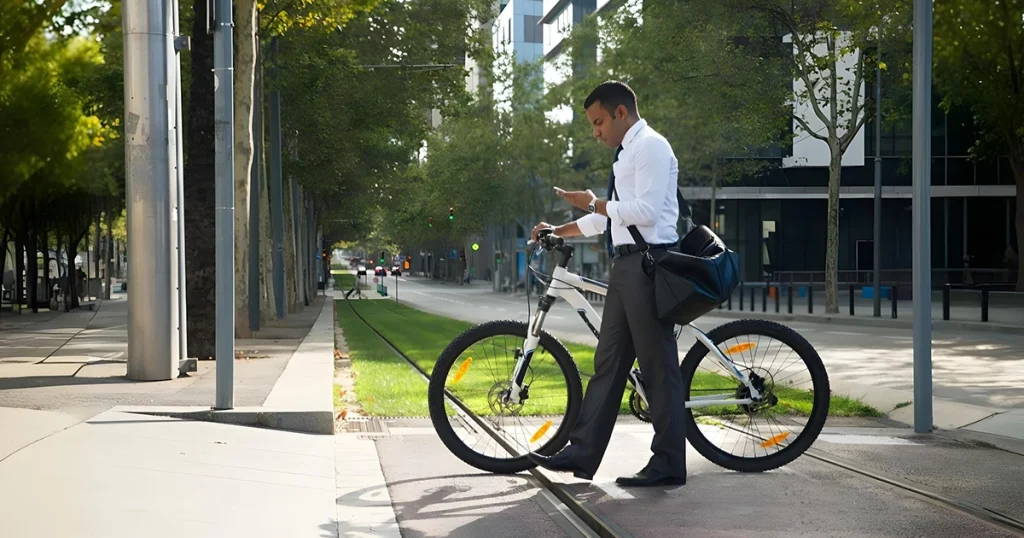
The cycle to work scheme is a great option to get tax savings on a bike, this can also include electric bikes and any associated equipment like helmets, locks etc…. You are free to use it without any personal restrictions as long as it is used at least some of the time for commuting to work or business journeys.
This way you have then received a benefit without having to take money out of the company as salary or dividends and therefore save some combination of VAT, dividend tax, corporation tax, income tax or national insurance.
Typically it works with your company buying the bike like it would any other tax deductible equipment, and then it would hire it to an employee or provide it without charge. In the event an employee hires it, they can pay for it out of their gross pay in the same way they would for a pension and get income tax, plus employers and employees national insurance relief on it. If you’re the owner of the business then there’s no point in paying to hire it and you can just use it free of charge, as it’s all your own money anyway.
You’ll need to create an employee hire agreement and at the end of the original term you can renew it, or you employee can buy the bike from the company out of their net pay and your business treats it as a sale. Your company must charge VAT on any hire fees to your employees, if it’s registered for VAT.
In terms of the corporation tax or VAT saving there is actually not any restriction on the total value of the bike and accessories. The restriction only comes in if you want your employee to hire it from you because of the FCA regulations around hiring out equipment worth more than £1,000 (inclusive of VAT).
There are many cycle to work schemes available but most people don’t understand that they aren’t mandatory and it is possible to save their fees and administer your own in the way I outlined in this section. However if you want to provide a bike worth more than £1,000 but don’t want to register with the FCA, then a scheme might be useful.
5. Directors & Employee Costs
With the current focus on employee welfare it is no surprise that the variety costs relating to this area is significant.

Pensions
After the auto enrolment rules were introduced many employees ended up being enrolled onto a pension scheme even if they didn’t want to , in addition to this as an employer you were in a position where you had to contribute into their pensions.
Alternatively your company may have decided to proactively pay into one as part of your benefits package. Whether or not you’re a director or employee then the rules around the tax deduction are broadly the same and pension costs are a tax deductible expense, although there is no VAT to reclaim on them.
Currently most people have an allowance of £60,000 every tax year they can use to contribute into a pension scheme, although sometimes this can go down to £10,000 if you’ve already started to draw down on one.
Pensions are attractive because you get corporation tax relief on the amount you pay in, plus you haven’t have had to withdraw those funds from your business so you also save the dividend taxes. In addition to that, once you’re 55 years old you can take 25% of the pension as a tax free lump sum, the remainder would be drawn down at your marginal tax rate for the years you chose to take it.
The biggest difference between employees and directors of their own business, is that to a business owner there isn’t really any difference between an employee or employer contribution, after all it is still all your own money.
Employees however often pay into their pensions via salary sacrifice which saves them Income tax and National Insurance. An added bonus is that it will also save you Employers National Insurance.
Warning! There are three things that can go wrong with pensions:
- If you pay into a pension personally instead of from your company you will lose tax relief because the government only tops up your pension provider by the income tax amount of 20% or 40%, whereas you would potential had to pay Corporation tax of 19% to 25% before you got the money out as a dividend and then a further 7% to 26% dividend tax on it (prorated, tax after a tax).
- Not protecting your pension allowances because you weren’t enrolled on a scheme. Even if you don’t want to pay into your pension, it’s worth getting enrolled onto a cheap and easy scheme like NEST so you can carry your unused allowances forward. You can use the last 3 years worth of allowances which means that 4 years later you could contribute £240k into your pension in one year if you hadn’t made any contributions before.
- Retrospectively trying to pay into your pension is also not possible, so if your company profits are large and you want to reduce your tax bill, then figuring that out after the year end is a bit late. This is why we prefer to have pre year end meetings with our clients rather than accounts sign off’s.
Director’s Salaries
Director’s salaries are tax deductible and I’ve written a very extensive article on how to determine the right salary for you, please take a look.
Employee Insurances
Employee related insurances can be divided into 3 areas and careful thought needs to go into the exact type you sign up for as some aren’t tax deductible. As usual there is no VAT on insurance the the insurance premium tax is not recoverable, but the business expenses paid can include the gross amount when working out your tax bill.
Life Insurance/Relevant Life Cover – Both do the same thing but only the latter is deductible for tax, the former would have to be paid personally or declared as an employee benefit.
Critical Illness/Key Person Insurance – Also in this scenario ,both do the same thing but only the latter is deductible for tax, the former would have to be paid personally or declared as an employee benefit.
Health Insurance – This is usually considered an employee benefit and would either have to be paid personally or be declared as an employee benefit.
Employee Benefits and Salary Sacrifice

There are a group of expenses that can be considered perks of the job or employee benefits and we’ve already covered some of them earlier on. When these perks apply to employees it can be straight forward to understand their treatment from a tax point of view.
For example if you provide Health insurance then your business can claim it as an allowable expense to reduce your total corporation tax bill, however you may have to declare it as a benefit in kind and deduct income tax from your employees wage bill and pay employers NIC’s on it. Quite often the advantage of providing these types of benefits is that even though your employee has to pay income tax on it, there is no employees national insurance due.
On certain benefits there is also an employers national insurance payment called class 1A National Insurance. Whilst it might be easy to assume that this 15% charge can be negated using your employment allowance, it is not the case and must be paid as the allowance doesn’t cover class 1A or 1B NIC’s.
Is it worth taking an employee benefit as the owner of a business or should I just pay for it myself?
When you add it up the combination of taking an employee benefit and paying the income tax, as well as the employers class 1A national insurance contributions can work out more expensive than if you just took the money out as a dividend and paid for the benefit yourself.
For example the tax on the benefit at the basic rate is 20% and then another 15% in Employers NIC’s, to total 35%. Whereas the dividend would incur 19% – 25% CT and then approximately 7% (8.75% prorated) dividend tax to total 26% – 32%.
At the higher rate this would look like 40% income tax and 15% ER NIC’s to total 55%, compared to a dividend that would incur 19% – 25% CT and then 25% to 27% (33.75% prorated) dividend tax to total 46% – 50%.
What does “Making it Good” mean?
There are instances where you may want to negotiate a deal on behalf of your employees to benefit from the economies of scale, but you don’t want it to cost the business.
In this situation your employees can pay you back the entire amount or part of the amount for that benefit through salary sacrifice or as a direct payment and they do not have to have it taxed as a benefit in kind.
Just note that if you do it for a company car then the making good has to be at the p11d value and not the actual cost of the vehicle, this can get very expensive.
Wellbeing – Any benefits you provide to enhance the health of your employees like food or an onsite gym, health screening, eye test, prescription work glasses, safety equipment and counselling are tax deductible and in addition don’t have to be declared as a BIK.
Gym memberships, massages or yoga classes are different and whilst you can save the Corporation tax and VAT, they would count as a benefit in kind.
Home Office – If your business mainly operates from home then it is possible to have your business reimburse you for the costs of your home office. One way this can be done is by apportioning the actual costs based on a hybrid of time and space used.
For example if you spend 40% of you total time at home working you might want to claim 40% of your electricity and gas, whereas if you only use 10% of your rooms then other costs like the mortgage interest (not the capital repayment) or council tax would be on that basis.
You can find a useful template on our website here, but whatever you do just remember to be reasonable about it. Alternatively you can use the HMRC flat rate of £6 per week, which often isn’t as lucrative.
WFH expenses are only available to employees and directors who don’t have an office premises they can reasonably travel to, so hybrid work arrangements don’t qualify for tax relief in this area!

Meetings
Typically meeting costs are tax deductible and this could include:
- Room Hire
- Refreshments (one alcoholic drink max, otherwise no limit)
- Travel
Training
When it comes to being able to claim training costs the limited company expenses model has an advantage over the one used by sole traders.
Whereas a sole trader is limited to claiming expenses on training related to the maintenance of existing qualifications and cannot claim for the costs of acquiring new ones. Limited Companies enjoy being able to claim tax relief on any training or qualifications that are relevant to the business.
Payroll & Subcontractors
All of the costs related to hiring staff like salaries, subcontractor payments and freelancers are generally deductible with no exceptions, this includes any PAYE taxes and tribunal costs. Care needs to be taken in certain industries that where specific tax schemes or rules apply, for example the construction industry scheme, NIC’s for self-employed cleaners and IR35 for deemed employees.
The costs of making staff redundant are also tax deductible without a benefit in kind tax charge if the amount is below £30,000, there are also no Employers NIC’s due up to this amount.
6. Cost of Sales
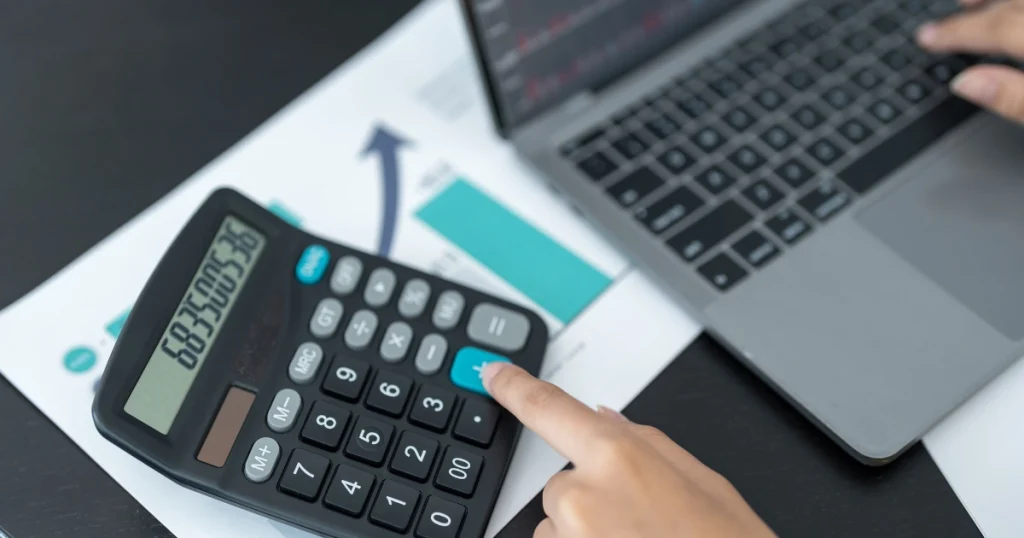
Quite often in the course of running a business you will have cost of sales, these are slightly different in nature to expenses that would be considered overheads as they are directly linked to the volume of sales you have in the business. For example you would be able to trace the cost back to a specific customer that it related to.
There are also what could be considered semi-variable overheads in this group, where the exact expense cant be linked back to a customer but in general the expense amount is linked to the volume of sales.
Stock & Materials
Whilst the rules for sole traders can vary, for a limited company it is always the case that the deduction for corporation tax is granted at the point the stock is sold and not the point of purchase. This is important to understand as there can be times when you have a lot of cash going out, but your tax bill still won’t benefit.
The VAT reclaim on stock takes a differing approach and you can reclaim this at the point of paying for the stock or when it was invoiced depending on the VAT scheme you’re on.
Stock is usually measured at the purchase price for the purposes of corporation tax, however there are instances where it can be reduced in value and the tax savings realised before it is sold, for example in cases where it becomes obsolete and needs to be disposed of.
Importing & Exporting
Quite often it is necessary to import goods for your business or in other cases export them which means that you may incur duty and VAT charges.
The VAT isn’t usually an issue as you can opt to use Postponed VAT Accounting (PVA) so you don’t have to pay the VAT at customs or reclaim it later.
Any costs you pay for the freight forwarder or import taxes will be considered allowable business expenses.
Postage, Freight & Courier costs
These types of costs are usually needed for many e-commerce related business operations and are perfectly reasonable to claim the tax deduction on.
You should just be wary of the VAT treatment as not all firms that provide these types of services will charge it.
Bad Debt
Bad debt can attract tax relief when invoices owed to you are either credited or written off, but to do this it must meet the criteria below and be a:
- a bad debt;
- a doubtful debt to the extent estimated to be bad. In the case of the bankruptcy or insolvency of the debtor, this means the debt except to the extent that any amount may reasonably be expected to be received on the debt;
- a debt or part of a debt released by the creditor wholly and exclusively for the purposes of the trade as part of a statutory insolvency arrangement.
‘Statutory insolvency arrangement’ means:
(a) a voluntary arrangement under the Insolvency Act 1986, Sch4 or Sch5 Bankruptcy (Scotland) Act 1985 or the Insolvency (Northern Ireland) Order 1989, or
(b) a compromise or arrangement under Part 26 Companies Act 2006, or
(c) an arrangement or compromise of a kind corresponding to those in (a) or (b) above under the law of a territory outside the UK.
In the event your company writes off a loan owed to it by someone else, there is also relief available for the impairment or loss of your loan asset.
Theft
There is usually no relief to claim on stock or equipment that has been stolen, as your business will already have paid for it and enjoyed the relief at that point. There can be exceptions to this when the stolen item was an asset that was being written down in it’s own pool and the remaining value can be written off.
If there is insurance compensation for the stolen goods then the money coming in will count as a sale and counteract any remaining write off costs. Usually this isn’t an issue as a business will seek to repurchase the equipment so there will be more money going out anyway to offset the insurance income.
Seller Fees
Many online market places charge fees relating to the marketing and fulfilment of sales made through their platforms. Whilst these fees are definitely tax deductible, it is really important to ensure you get the VAT treatment right as there can often be a mix of standard VAT and reverse charges applied.
7. General Overheads

The overhead costs of your day to day operations can also be considered legitimate business expenses and you can claim the cost to reduce your tax bill. They break down in to several areas, but there are likely many more we haven’t covered:
Rent
The costs of renting your business premises are an allowable expense and any payments you make to your landlord are deductible for corporation tax. You should pay careful attention to the VAT reclaim if you make one as in general many commercial premises are VAT exempt so there may not be any to reclaim.
Just bear in mind that if you do buy your business premises, then the treatment is different and you would need to claim tax relief on the interest payments and apply the appropriate rules for building revaluations.
It is very unlikely you would actually have a property or other significant asset in your trading company due to the risk, so there is a chance you will be paying rent to another holding company you own from your main one.
Business Insurance
Businesses often have Professional Indemnity, Employers & Public Liability, Loss of business and Contents/Equipment insurance. These are all tax deductible, but as usual there is no VAT on them and the insurance premium tax can’t be reclaimed.
Telephone & Internet
The rules around phone and broadband costs in a business can be frustrating as for them to be an allowable expense the contract has to be in the businesses name. This is unfortunately a scenario where for a limited company there is no apportionment allowed if you have a mix of business and personal use, although that is different for sole traders.
Many people tend to forgo the tax and VAT savings in this areas because they often need to have a personal phone and broadband contract anyway and it doesn’t make sense to duplicate the costs just to save tax. Quite often the phone companies significantly increase the price if there is a requirement for business use which also negates the tax savings.
Whilst you may not be able to put a personal mobile phone contract through the business, if there are any specific business related calls you can identify then you can have your company reimburse you for them.
If you buy any equipment related to phones and broadband like handsets and routers and these are utilised in the business, then these are tax deductible and depending on their value and life span can either be treated as a consumable expense or as an asset for capital allowances.
Printing & Stationery
Whilst printing is deductible for corporation tax, the VAT treatment can vary as many forms of external printing like leaflets or books can be zero rated.
Any costs related to printing in house like ink, paper, stationery and maintenance are fine to claim as an expense.
Software
Businesses are becoming increasingly reliant on software and subscriptions and assuming that the expense is business related then it is fine to put through your business, but the VAT treatment of software is rarely obvious and some have VAT and some don’t so it is vital to check the invoices.
Maintenance
Costs relating to the upkeep of your premises are generally tax deductible as long as they can’t be considered permanent improvements to a building that add substantial value. These might include redecorating, new carpets, heating systems, electrical work or temporary partitions.
There might also be dilapidations costs for when you have to hand a building back to the landlord and put it back to it’s original state.
Professional Services
Most services of this type are generally deductible provided they relate to a business activity or another tax deductible expense, for example advice on business insurances or company pensions. The deductible nature is then revoked if they are primarily for personal advice like visa’s or personal pensions and investments.
Loans, Capital & Interest
A common error business owners make is assume that the entire loan payment they make each month is tax deductible, where as in reality there is a capital component and interest on it. Only the interest on the loan is tax deductible and it would be double counting to also put through the repayment as tax relief has already been obtained on the expenses the loan was used to pay for.
This methodology also applies to credit cards where the capital and interest components must be separated. It is rare for interest to not be zero rated for VAT, however there are a few exceptions to this when asset finance is concerned so it’s best not to assume.
Personal Loans
Any personal loans you take out in order to introduce money into the business are tax deductible and really you have to options to deal with these:
- Have your company reimburse you the full amount and then treat it in the same way above.
- Don’t be reimbursed by your company and put it through your self-assessment tax return, which is usually less tax efficient as you won’t get the corporation tax relief.
Insurance Claims
From time to time a business will receive money as compensation from insurance companies and this money is there to offset the costs of replacing whatever was damaged or stolen.
When you repurchase this equipment it will be treated as a tax deductible expense, whilst the tax exempt receipt from the insurer will be treated as income and the two will cancel out to ensure there is no overall impact to your accounts or tax position.
Bank Fees
Any bank or payment processing fees are deductible, but bear in mind that they are usually zero rated for VAT so there is nothing to reclaim.
8. Equipment & Assets

The tax treatment of any long term assets is a slightly more complex topic but can be simplified by understanding that between the time of purchase and the time of sale or disposal, the total amount of expense you have claimed is equal to the depreciation or loss in value you suffered.
When you buy an asset it is not always entirely tax deductible in the first year you purchased it as there is often consideration given to the useful life of the asset and as a result you may need to claim capital allowances which are essentially a form of tax depreciation.
There are also times where you will have a choice in the tax treatment of an asset, but being tactical about these isn’t as relevant for small limited companies, where unlike sole traders they don’t have any personal allowances to utilise and you would just take the option that gave you relief the quickest.
There is often a difference between capital allowances and the depreciation in your accounts, which is why the taxable profit in your CT600 corporation tax return is rarely the same as the net profit in your company accounts.
In the long term for each individual asset these two numbers will balance out and equate to each other, however until then the difference sits within a differed tax account on your balance sheet.
Pooling & Asset Registers
Because of the many different types of treatment available for an asset, as time goes by in your business it is likely you will forget how you treated it from a tax point of view when you first bought it. This would be tricky as certain treatments like the AIA or First year allowances require you to treat a sale as income due to the entire upfront amount you claimed.
It is essential you keep a log of the equipment in your business and the tax treatment of it, including dates and values.
FYA, AIA & FE
In general there are a series of allowances which have different names but from a small businesses point of view are really the same thing. The First Year Allowance, Annual Investment Allowance and Full Expensing end up giving you the entitlement to claim the full value of your asset in the first year you purchased it just like any other expense.
The only real difference between them is that the AIA has an annual £1M limit and the others are specific to certain types of asset like environmentally friendly cars. I mentioned earlier that the choice of allowances wasn’t particularly relevant as they all kind of did the same thing, but if you were a larger business then you might want to preserve you AIA limit and utilise the others first.
Asset Pools
For certain assets where the first year allowances are not available like cars or you chose not to utilise them, you can add the asset to a pool where an annual depreciation amount is claimed against the value of the whole pool combined.
The calculation is done on a reducing balance method, which means every year you take last years closing value for that pool (tax written down value), add any new purchases and then apply the 18% or 6%.
With this method, unlike the first year allowances you don’t actually need to deal with disposals or sales unless the asset was in it’s own pool. When the pool value gets down to £1,000 or below you can write off the remaining value at that point.
The rates are 18% or 6% for the special rate pool, the 18% applies to anything not listed below and is not a building.
Special Rate Pool (6%)
From HMRC, You can only claim 6% tax relief on:
- parts of a building considered integral – known as ‘integral features’
- items with a long life
- solar panels
- thermal insulation you’ve added to a building
- cars with CO2 emissions over a certain threshold – check the threshold for your car, which depends on the car and when you bought it
Integral features
Integral features are:
- lifts, escalators and moving walkways
- space and water heating systems
- air-conditioning and air cooling systems
- hot and cold water systems (but not toilet and kitchen facilities)
- electrical systems, including lighting systems
- external solar shading
Businesses can claim annual investment allowance on integral features so there’s not a lot of point in using the 6% pool for these.
Buildings

Buildings generally tend to appreciate rather than the other way around so there are no capital allowances or tax deductions relating to them until the point of sale, at which there is more likely to be a taxable gain.
Whilst the accounting treatment may differ depending on whether you apply FRS105 or not, there are generally costs that are deemed to be of a nature where they can only be included at the point you sell the property and not the day to day running of the business or as a capital allowance:
- Building purchase value
- Solicitors fees
- Estate agents fees
- Stamp duty paid
When you come to sell the property you would take these expenses from the proceeds when determining if you made a profit or a loss and then pay tax or receive tax relief based on that.
Garden Offices
Garden Offices are becoming increasingly popular and in general have similar rules to other buildings (above) due to not being able to depreciate them. However you can still reclaim any VAT needed in their construction and fittings.
Whilst not being able to claim depreciation on the garden office can be frustrating, putting it through your business can still save you dividend tax by not having to withdraw the money personally for the build. If you sell the office, replace it or move house, you will be able to claim the corporation tax relief at that point.
It’s really important to understand that if you build a structure that is likely to last over 30 years, then HMRC can treat it as a distribution and you’d have to pay dividend tax on the value and all other reliefs are blocked. Most garden offices are rated to have a lifespan of 10 – 15 years, but it can be a costly mistake to get confused about the nature of the building.
Some aspects of the office can be claimed for both corporation tax savings and also the VAT recovery (if applicable):
Office Equipment, Electrical Systems, Lighting, Air Conditioning Heating and Water Systems, Insulation
To ensure that the new office remains exempt from capital gains tax under the Private Residence Relief rules, you will need to have at least an incidental amount of personal use on the property, although anything more than incidental could attract a benefit in kind tax and VAT restriction.
It is worth referring to the rules around claiming home office costs to understand how your company can reimburse you for those.
There is no point in charging a rent to your company for the use of the garden office that exceeds your costs as you could risk the local council claiming it is a commercial property and within the scope of business rates. This wouldn’t usually be a problem, unless it is a second premises for your company, which would mean the usual reliefs to offset business rates are restricted.
Alternatively if the second premises isn’t an issue and you’re confident it is below the rateable value to trigger business rates then you could charge a market value rent for the land. But then that will be taxable income for you, which in theory would be taxed at 20% income tax rather than the combination of at least 27% which you get from basic rate dividend tax and corporation tax combined, if you chose to withdraw money that way instead so could be appealing.
9. Pre-trading Expenses
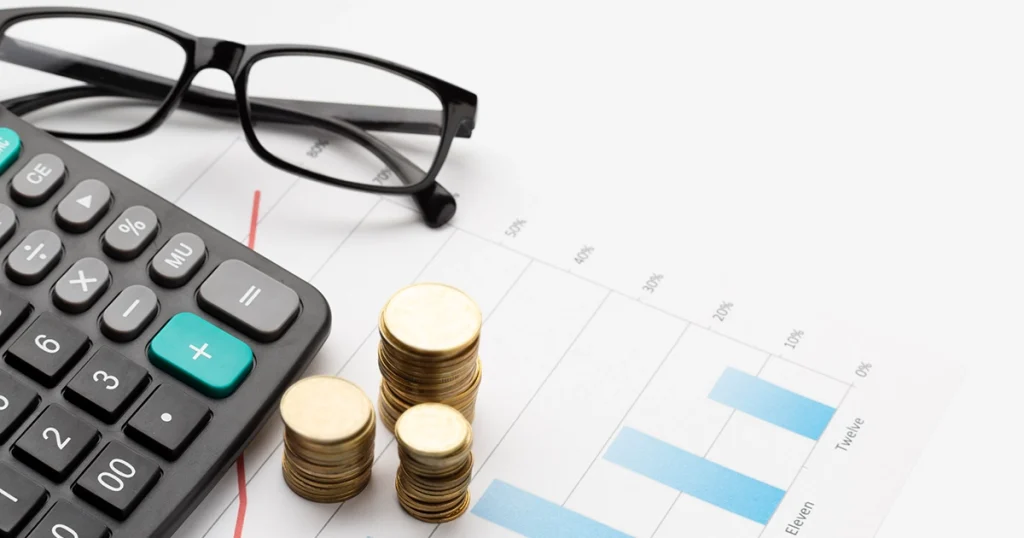
Often there are expenses that relate to setting up a business that are spent before the new company even exists or has started trading, these could be but are not limited to:
- Incorporation costs
- Domain names
- Equipment
- Services
In the event you incurred these personally because you didn’t have a business bank account at the time, then you can have the company reimburse you for them later on or treat them as a directors loan transaction showing that you loaned money into the business.
If you’re VAT registered then you can usually do an upfront reclaim for any equipment or for stock that you’re still holding when you register based on the value you paid for it, if it was within the last 4 years and you can also go back 6 months for any services on the reclaim.
There is a negative loophole which means that any pre registration reclaim is blocked if the VAT was incurred in a sole trader business before incorporation. If you are a sole trader and are planning to move to a limited company business structure, it’s vital that you register for VAT as a sole trader first and then transfer the registration to the limited company.
10. Taxes & Penalties
The last section of this guide is going to briefly cover taxes that are also tax deductible for corporation tax and what happens if you receive a penalty.

Penalties
Whilst in an ideal world you would always be completely clean and law abiding, the realities of running a business may lead to instances where you have been fined for some infringement of the rules. To simplify the tax treatment of penalties and fines it is clear that any imposed by a government organisation on legislative grounds are not tax deductible in any way.
I specified legislative grounds eg. not filing tax work or speeding, because there may be instances where you have a commercial contract with a government organisation with punitive charges for failure to deliver or for other performance based reasons, in which case they would be deductible.
R&D
Whilst claiming R&D relief isn’t as popular as it once was due to the reduction of the relief and the much higher chances of a tax investigation relating to it, the regime for small business still allows a healthy tax deduction for genuine R&D related costs.
Whilst I’ll cover it in my warning about tax avoidance schemes further down, be aware there are many bogus providers of this type of service out there and you could end up with serious issues if they’re not dealt with properly.
Avoid going with the provider that tells you what you want to hear and always get multiple opinions and seek pre authorisation for the claim.
Taxes
Typically the only taxes that provide any form of deduction when working out corporation tax is PAYE, Import duties and Insurance premium taxes.
I mentioned earlier in the article VAT is generally worked out separately before even considering the profit and loss account, however there may be time when there are losses because of a flat rate scheme which can reduce your taxable profit.
Dividends are never tax deductible as they are worked out after your corporation tax bill has been taken into account.
Provisions & Accruals
There will be times when your business will have up coming costs or potential costs that you expect will impact your taxable profits and you may want to declare those early by creating a provision on your balance sheet before you pay for them so that you can benefit from the tax saving earlier.
This is possible provided that the provision meets these criteria:
- It is in respect of allowable revenue expenditure and not for example, in respect of capital expenditure see RTZ Oil & Gas Ltd v Elliss [1987] 61TC132.
- It is in accordance with Generally Accepted Accounting Practice (GAAP).
- It does not conflict with any statutory rule governing the time at which expenditure is allowed.
- It is estimated with sufficient accuracy, see BIM46555.
When the actual expenditure is paid for later, then it is vital to ensure that the cost is allocated to the balance sheet where the provision is located rather than the profit and loss which would result in a double counting of the tax relief.
Alternatively if the provision or some of it is no longer required, then it can be reversed and the tax relief obtained initially can be paid pack in a subsequent period.
Prepayments
It is possible that you may also pay upfront for certain expenditure that relates to a a longer period of time spanning into another accounting period than your current one. This could be where you paid for a year of insurance up front and only three months of that sits withing your current accounting year.
In these scenarios it is only reasonable to create a prepayment reducing the tax deductible costs you are claiming and deferring them to another year, which is essentially the inverse of the provision and accruals scenario above.
Tax avoidance schemes
Sadly there is very little regulation in the UK when it comes to selling business to business services, which means that quite often the organisers of tax avoidance schemes will prey on small business owners.
Typically a scheme will work by getting you enhanced expenditure on a business expense like with R&D tax credits or movie investment schemes, or they could work by charging your business management fees and then permanently loaning money back to you.
In general whilst they may not break the legislation, they will create uncommercial arrangements that can be heavily challenged retrospectively by HMRC and also then allow the liabilities consisting of back taxes, penalties and interest to be transferred to you as a private individual.
Despite the scheme providers claiming a registration as a form of legitimacy, it is very important to understand that a DOTAS number is not an endorsement by HMRC but a target that guarantees a future enquiry and a very painful financial future.
The scheme providers won’t be there to help you pick up the pieces as they have already been paid at that point and they have no personal liability.
Summary
There is too much information here to summarise, but I guess the main take away point is about being reasonable and acting in a commercially driven way at all times.
As I said at the very beginning, tax deductible expenses aren’t necessarily something you can control in a business as you either need something or you don’t.
Whilst there may be some decisions to be made about whether you put something through the business or pay for it personally out of your post tax income, in general these scenarios are few and far between and it will come down to what your business needs to spend money on and not be driven by a desire to lower your tax bill.
Always remember “Don’t let the tax tail, wag the dog!”
FAQs
1. What are tax-deductible expenses for a limited company?
Tax-deductible expenses are business costs that can be subtracted from your company’s taxable profits, thereby reducing the corporation tax bill. Common examples include office costs, travel expenses, and employee salaries.
2. How can a limited company save on corporation tax?
Limited companies can save on corporation tax by efficiently claiming all allowable business expenses, utilising capital allowances, and making the most of tax reliefs such as R&D credits.
3. Can limited companies claim lunch expenses?
Lunch expenses can be claimed if they are incurred during business travel or meetings outside the normal work pattern. However, meals during regular work hours at the usual place of work are generally not deductible.
4. What is the annual investment allowance?
The Annual Investment Allowance (AIA) allows businesses to deduct the full value of qualifying plant and machinery from their taxable profits in the year of purchase, up to a certain limit.
5. Can I claim home office expenses as a limited company director?
Yes, you can claim home office expenses if you work from home. This can include a portion of your rent, utilities, and internet costs, calculated based on the space and time used for business purposes.
6. What is the difference between a sole trader and a limited company regarding tax-deductible expenses?
While both can claim tax-deductible expenses, limited companies have a broader range of allowable expenses and can benefit from corporation tax rates, whereas sole traders pay tax on their profits through income tax.
7. How can a limited company avoid paying too much tax?
To avoid overpaying tax, ensure all legitimate business expenses are claimed, use tax-efficient salary and dividend structures, and take advantage of available tax reliefs and allowances.
8. Are there tax benefits to forming a limited company?
Yes, forming a limited company can offer tax benefits such as lower corporation tax rates, the ability to claim a wider range of expenses, and potential savings on personal tax through salary and dividends.
9. How do I claim expenses from my business?
Expenses can be claimed by keeping accurate records of all business-related purchases and ensuring they are documented and justified as necessary for business operations. These claims can then be submitted through the company’s tax return.
10. What happens if I make a mistake on my tax return?
If you make a mistake on your tax return, it’s important to correct it as soon as possible. HMRC allows amendments to be made within a specific timeframe. Consistently inaccurate returns may result in penalties and interest charges.


